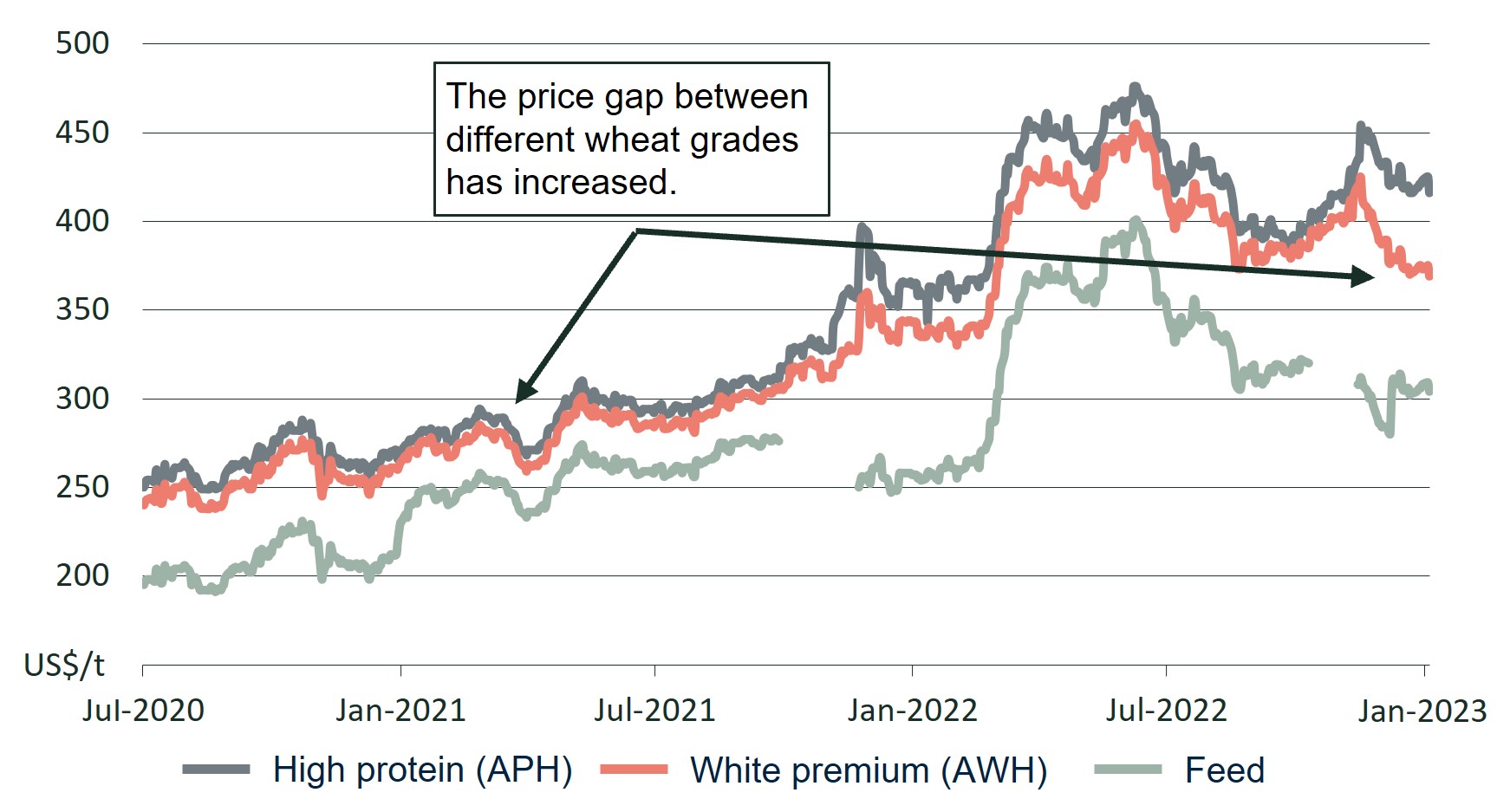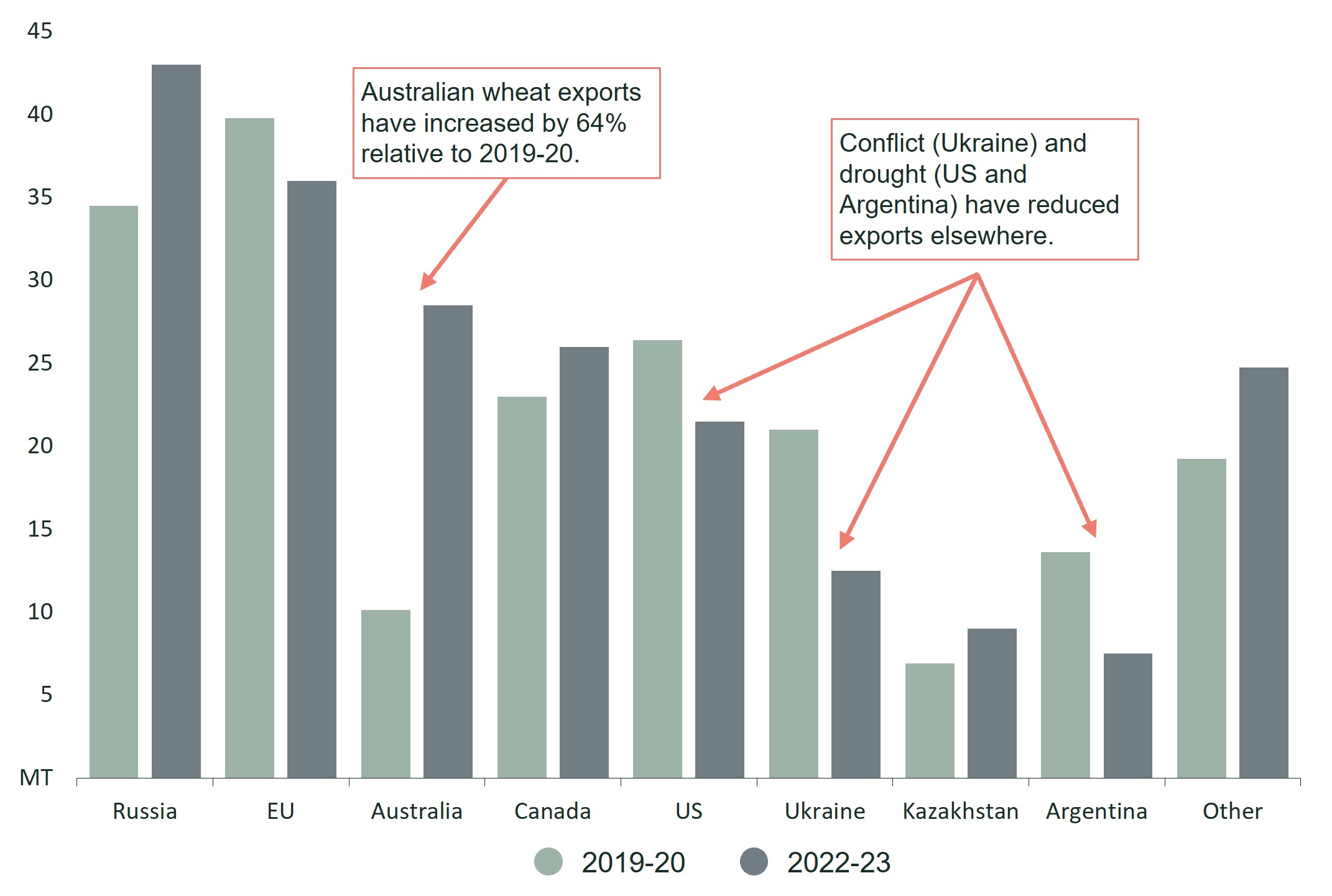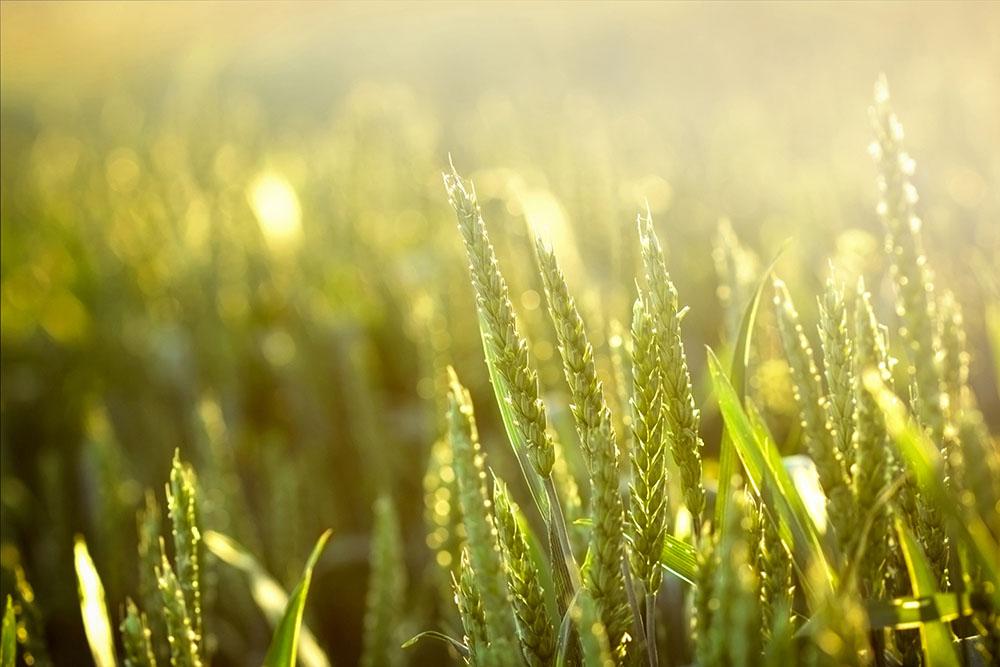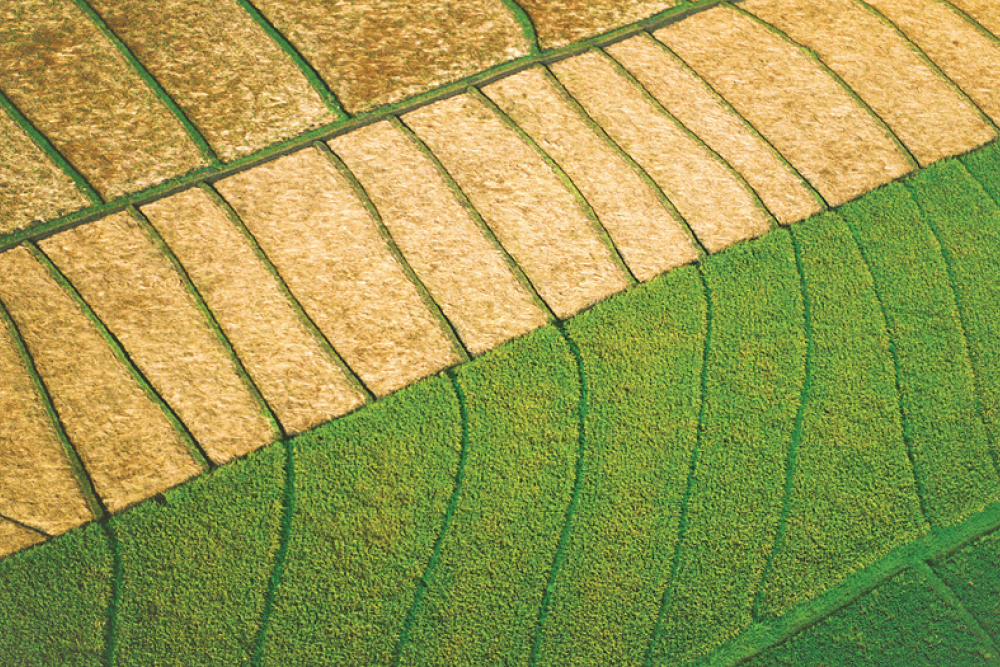Australian wheat is expected to comprise a record 13.7% share of global wheat exports in 2022-23. This forecast is due to record levels of Australian production, conflict in Ukraine, and drought conditions in the US and Argentina.
Record share of world exports for Australian wheat
- The USDA expects Australia to account for a record 13.7% of world wheat exports in 2022-23 (Figure 1).
- This is a 1 percentage point increase from 2021-22 and an 8.5 percentage point increase from the drought affected 10-year low of 5.2% in 2019-20.
- Approximately half of Australia’s wheat exports go to the ASEAN region, predominately Indonesia, Vietnam, and Philippines.
- Australian wheat exports to China have also increased. This is primarily due to the price of feed-wheat falling below the price of feed-corn (both are substitute options for animal feed).
Figure 1: World wheat exports (million tonnes) and total value of Australian wheat exports 2018-19 to 2022-23
Uncertainty remains regarding Australia’s wheat harvest
- While overall production is strong, untimely rain has led to the abandonment of some crops in eastern states. Damaged crops have also been downgraded to feed and sold at lower prices.
- The prospect of reduced premium wheat availability and improved feed wheat availability has increased the export price differential between high protein wheat and other wheat classes (Figure 2).
- This will increase the price difference between wheat exports used in bakery products/noodles and wheat used in feed lot operations.
- More information about Australian wheat classes and their uses can be found here.
Figure 2: Australian wheat export prices July 2020 to Jan 2023
Visit Wheat Quality Australia for more information about Australian wheat classes and their uses.
Drought and conflict shape global wheat exports
- The impact of drought and conflict on global wheat exports is clear when comparing 2019-20 to the 2022-23 forecast (Figure 3).
- In 2019-20, favourable seasonal conditions led to record exports from the EU and Ukraine, and strong exports from the US and Argentina. Drought conditions reduced Australian wheat exports to 10.1 million tonnes, the sixth lowest result since 1988-89.
- In 2022-23, drought is expected to reduce exports from the US and Argentina. Ukrainian wheat exports (-68%) and production (-30%) are expected to be well-down relative to 2019-20.
- Another bumper season in Australia, increased production in Canada and Russia, and a reduction in Russia’s wheat export tax, are helping to fill the gap left in global wheat supply.
- Global wheat prices have fallen from their mid-2022 highs, however, are expected to remain strong in 2023.
Figure 3: Comparison of world wheat exports 2019-20 and 2022-23
Download
January 2023 – Australian wheat export snapshot (PDF)
January 2023 – Australian wheat export snapshot (Word)
Connect with us
Follow our @AusAgTrade Twitter account for all your #TradeTips and Market Intel.
Subscribe to our monthly Agriculture Market Intelligence Insights newsletter







